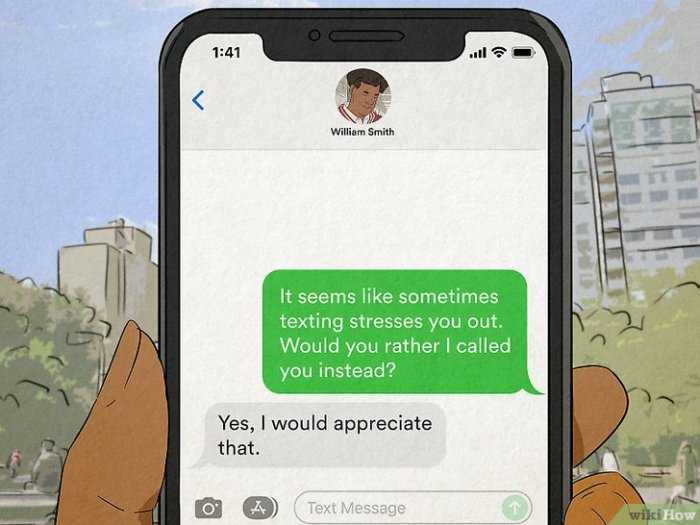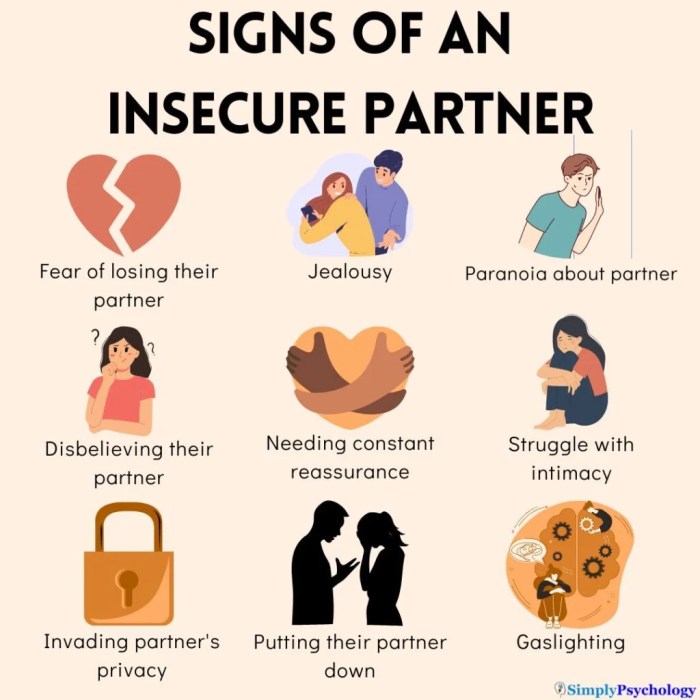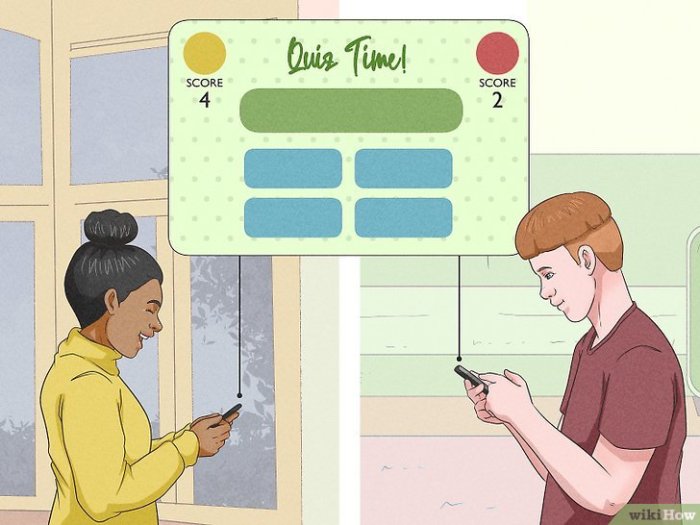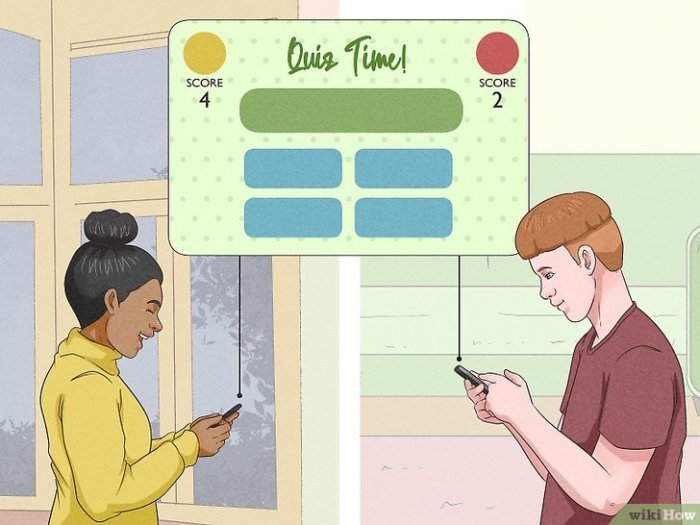Act Toward Someone with Dissociative Identity Disorder is about understanding and supporting individuals living with this complex condition. It’s crucial to approach interactions with empathy, patience, and a focus on safety and well-being. This guide will explore different approaches to interacting, building support systems, and managing potential triggers. By learning about DID, we can create more supportive environments for those affected.
Dissociative Identity Disorder (DID) is a complex mental health condition where an individual experiences a disruption in their sense of self, often manifesting as different identities or personality states. Learning to navigate interactions with someone experiencing DID requires careful consideration of communication styles, boundary setting, and trigger management. This exploration will provide practical strategies to foster trust and understanding.
Understanding Dissociative Identity Disorder (DID)
Dissociative Identity Disorder (DID), formerly known as multiple personality disorder, is a complex mental health condition characterized by the presence of two or more distinct personality states. These distinct identities may have their own unique memories, behaviors, and ways of interacting with the world. Individuals with DID often experience significant distress and impairment in their daily lives due to the presence of these different identities.DID is a relatively rare condition, estimated to affect less than 1% of the population.
While the exact prevalence is difficult to pinpoint, it’s widely accepted that women are diagnosed with DID more frequently than men. This disparity is not fully understood but may be related to differences in reporting and diagnosis.
Treating someone with Dissociative Identity Disorder requires patience and understanding, just like navigating the complexities of dating. Consider questions like those you’d ask a potential partner, like Questions to Ask a Guy Before Dating , to gauge compatibility and respect their boundaries. Ultimately, approaching anyone with a mental health condition with empathy and sensitivity is key.
Defining Dissociative Identity Disorder
Dissociative Identity Disorder (DID) is a mental health condition characterized by the presence of two or more distinct personality states, each with its own patterns of perceiving, relating to, and thinking about the environment. These distinct identities, or alters, may exhibit different memories, behaviors, and physical characteristics.
Common Symptoms and Characteristics
Individuals experiencing DID often exhibit a range of symptoms and characteristics. These can include:
- Disruptions in Identity: A feeling of detachment from one’s own thoughts, feelings, or memories, as well as a sense of being disconnected from one’s body. Individuals may report experiencing amnesia for specific periods of time or events, or have gaps in their recollection of daily activities. This often leads to fragmented memories and a struggle with piecing together past experiences.
- Alterations in Behavior: Changes in behavior, including different ways of speaking, dressing, or interacting with others, may accompany the presence of different identities. These alterations can be significant and surprising to the individual and others around them.
- Emotional Dysregulation: Fluctuations in mood and emotional responses are frequently observed. This can range from intense emotional outbursts to periods of emotional numbness. This variability can be challenging for the individual to manage and often impacts their relationships.
- Memory Problems: Amnesia, or gaps in memory, are a key feature of DID. Individuals may experience significant gaps in their recollection of personal history, significant events, or even their own identity.
Potential Causes and Contributing Factors
The exact causes of DID remain a subject of ongoing research and debate. However, several factors are believed to play a role, including:
- Trauma: A significant history of childhood trauma, particularly abuse or neglect, is frequently associated with the development of DID. The trauma may be a crucial factor in the individual’s experience of dissociation as a coping mechanism.
- Genetic Predisposition: Research suggests a possible genetic predisposition to DID, though the specific genes involved are not yet fully understood. This genetic component may make certain individuals more susceptible to developing the disorder.
- Environmental Factors: Environmental factors, such as stressful life events or a lack of supportive relationships, can also play a role in the development and expression of DID. These factors may exacerbate pre-existing vulnerabilities or trigger the emergence of dissociative symptoms.
Comparison with Other Mental Health Conditions
DID shares some overlapping symptoms with other mental health conditions, making accurate diagnosis crucial. Distinguishing DID from other disorders, such as schizophrenia or borderline personality disorder, requires careful consideration of the specific symptoms and their presentation.
- Schizophrenia: While both conditions may involve disruptions in thoughts and perceptions, the fundamental characteristics and underlying mechanisms differ significantly. Schizophrenia typically involves hallucinations and delusions, while DID focuses on the presence of multiple identities.
- Borderline Personality Disorder (BPD): BPD is characterized by instability in interpersonal relationships, self-image, and affect. While some symptoms can overlap, the presence of distinct identities is a defining feature of DID that sets it apart from BPD.
Resources for Further Research
- The International Society for the Study of Trauma and Dissociation (ISSTD): Provides valuable information, research, and resources on dissociative disorders.
- The National Alliance on Mental Illness (NAMI): Offers information and support for individuals with mental health conditions and their families.
- The Mayo Clinic: Provides detailed information on various mental health conditions, including DID.
Approaches to Interaction

Navigating interactions with someone experiencing Dissociative Identity Disorder (DID) requires a nuanced and understanding approach. It’s crucial to remember that DID is a complex condition, and each individual’s experience with it is unique. The focus should always be on fostering a safe and supportive environment where the person feels respected and understood.
Different Interaction Approaches
Various approaches can be beneficial in interacting with someone with DID. A crucial element is to recognize the potential for multiple identities to exist within one person. This understanding necessitates flexibility and adaptability in communication styles. The most effective interactions are built on empathy, validation, and patience.
Importance of Empathy and Understanding
Empathy and understanding are paramount in interactions with individuals with DID. Acknowledging the individual’s inner world and respecting their experiences, regardless of the identity currently present, is vital. By demonstrating empathy, you create a safe space for them to express themselves and share their experiences. Active listening, reflecting back what is heard, and seeking to comprehend the person’s perspective from their perspective are essential components of empathic communication.
Thinking about how to best act toward someone with Dissociative Identity Disorder? It’s all about patience and understanding, really. Plus, with bands like death cab for cutie announcing a fall tour, death cab for cutie announce fall tour , it’s a reminder to appreciate the unique beauty of different perspectives, just like the various personalities within DID.
So, keep an open mind, be supportive, and focus on building trust. It takes time, but it’s worth it.
Effective Communication Strategies
Clear and concise communication is key. Speak in a calm, reassuring tone. Avoid complex or confusing language. Keep interactions focused and avoid overwhelming the person with too much information at once. Using simple, direct language and maintaining a consistent approach are vital.
When communicating, ensure that the message is clear and avoids ambiguity.
Patience and Validation in Building Trust
Building trust takes time and consistent effort. Patience and validation are essential in this process. Acknowledging and validating the person’s feelings, even if they seem contradictory or confusing, fosters trust and encourages open communication. Avoid rushing the process or pressuring the person to reveal more than they are comfortable sharing.
Avoiding Triggering Behaviors
Understanding and avoiding triggering behaviors is critical in maintaining a supportive interaction. Triggering events can vary widely from person to person and may involve specific words, topics, or environments. It’s important to be aware of potential triggers and to adapt your communication accordingly. Asking the person about their personal triggers can provide insights and guide your approach.
Table Comparing and Contrasting Interaction Styles
| Interaction Style | Strengths | Potential Weaknesses | Considerations |
|---|---|---|---|
| Active Listening and Validation | Creates a safe space, encourages trust, and fosters understanding. | Can be time-consuming, and may require a significant investment in patience. | Requires mindful attention to nonverbal cues and expressions. |
| Clear and Concise Communication | Reduces confusion and promotes understanding. | Can be perceived as impersonal if not paired with empathy. | Ensure language is appropriate for the person’s cognitive abilities and current emotional state. |
| Respectful and Non-Judgmental Approach | Promotes acceptance and fosters trust. | Requires refraining from personal opinions or assumptions. | Maintain a neutral and unbiased stance throughout the interaction. |
Building a Support System

A robust support system is crucial for individuals with Dissociative Identity Disorder (DID). It provides a foundation of understanding, acceptance, and safety, enabling those with DID to navigate the complexities of their condition and foster healing. The right support network can significantly improve their well-being and overall quality of life.A supportive environment is essential for managing the symptoms of DID.
This environment fosters a sense of security and stability, allowing individuals to feel safe enough to explore their inner world and integrate their different identities. A strong support system can buffer the impact of triggers and trauma, helping individuals develop coping mechanisms and strategies for managing their condition.
Role of Family and Friends
Family and friends play a vital role in supporting someone with DID. Their understanding and acceptance are fundamental to creating a safe and nurturing environment. Open communication, active listening, and a willingness to learn about DID are crucial. Empathy and patience are key qualities in supporting someone with DID. It’s important to avoid judgment or minimizing their experiences.
Educating themselves about DID is critical to understanding the condition and responding appropriately.
Strategies for Building a Strong Support Network
Building a strong support network involves actively reaching out and connecting with others who understand and empathize with the challenges of DID. This can involve joining support groups, connecting with online communities, or seeking out mentors or role models. Open and honest communication is essential to building trust and rapport with others. This involves active listening, validating feelings, and offering support without judgment.
Significance of Professional Support and Therapy
Professional support and therapy are paramount in managing DID. Therapists trained in DID can provide specialized care and guidance. They can help individuals understand their condition, develop coping mechanisms, and work towards integration. Regular therapy sessions create a safe space for exploration and growth, enabling individuals to address underlying trauma and foster a sense of wholeness. Therapy, combined with a supportive network, is essential for achieving positive outcomes.
Support Groups and Organizations
A structured support network can be immensely helpful in providing a sense of community and shared experience. Joining a support group allows individuals to connect with others who understand their challenges. These groups often provide opportunities for shared experiences, support, and resources.
| Support Group | Description | Contact Information |
|---|---|---|
| National Alliance on Mental Illness (NAMI) | Provides support, education, and advocacy for individuals with mental health conditions, including DID. | (Insert contact information here) |
| The DID Resource Center | Offers resources and information specifically focused on Dissociative Identity Disorder. | (Insert contact information here) |
| The International Society for the Study of Trauma and Dissociation (ISSTD) | Provides a professional forum for researchers and clinicians focused on trauma and dissociative disorders. | (Insert contact information here) |
Communication and Boundaries
Navigating relationships with individuals experiencing dissociative identity disorder (DID) requires a delicate balance of understanding, empathy, and clear communication. Effective communication strategies and well-defined boundaries are crucial for fostering a supportive and healthy environment for everyone involved. This section will delve into practical approaches for setting and maintaining these boundaries while respecting the unique needs of those with DID.Setting healthy boundaries is essential in any relationship, but particularly important when interacting with someone with DID.
Understanding and respecting individual limits, whether emotional, physical, or otherwise, promotes a positive and sustainable connection. This section will Artikel key strategies to establish and maintain these boundaries, highlighting the importance of individual needs and limits.
Effective Communication Strategies
Open and honest communication is paramount in building trust and fostering understanding. Active listening, validation, and a focus on mutual respect are essential elements. Avoid accusatory language or minimizing the individual’s experience. Instead, strive for a collaborative approach that emphasizes shared understanding and empathy. It is important to remain mindful of the potential impact of your words and actions.
Setting Appropriate Boundaries
Clear and consistent boundaries are crucial for maintaining a healthy dynamic. These boundaries should be mutually agreed upon and understood by all parties involved. They should be specific and clearly articulated, encompassing both acceptable and unacceptable behaviors. For example, establishing clear expectations around communication frequency, emotional support, and personal space can be helpful. Boundaries should also be flexible and adaptable, recognizing that individual needs may change over time.
Challenges in Establishing Boundaries
Individuals with DID may face unique challenges in establishing and maintaining boundaries due to the complexity of their internal experiences. A lack of consistent identity and fluctuating emotional states can sometimes make it difficult for them to articulate or enforce boundaries. Patience, understanding, and a willingness to adapt communication styles are essential in these situations.
Respecting Individual Needs and Limits
Respecting individual needs and limits is paramount in any interaction. Recognizing the potential for multiple identities and fluctuating states of mind is critical. Instead of assuming a singular perspective, acknowledge and validate the diversity of experiences and needs within the individual. Emphasize the importance of individual autonomy and self-expression. Be open to the possibility that boundaries may shift and evolve over time, and remain flexible and adaptable in response.
Communication Styles and Impact
Different communication styles can have varying effects on individuals with DID. Understanding these nuances is key to effective interaction.
Treating someone with Dissociative Identity Disorder requires a gentle, understanding approach. Focus on building trust and validating their experiences. It’s also important to be aware of the significant emotional toll that this condition takes, and remember that support from a therapist or counselor is essential. Meanwhile, the archival Daniel Johnston box set due is a reminder that sometimes, navigating complex issues requires patience and an open mind.
Ultimately, compassion and a genuine desire to help are key when interacting with someone facing this challenge.
| Communication Style | Strengths | Potential Weaknesses |
|---|---|---|
| Assertive Communication | Direct, clear, and respectful expression of needs and boundaries. | Can sometimes be perceived as confrontational or demanding, if not delivered with empathy. |
| Passive Communication | Avoids conflict and can be helpful in de-escalating tension. | Can lead to unmet needs and resentment, potentially undermining boundaries. |
| Aggressive Communication | May seem forceful, potentially intimidating. | Can lead to defensiveness and strained relationships. |
| Passive-Aggressive Communication | May appear to be compliant, but indirectly expresses dissatisfaction or resentment. | Difficult to address directly, leading to miscommunication and conflict. |
Managing Triggers and Stressors
Navigating life with Dissociative Identity Disorder (DID) often involves managing a complex interplay of triggers and stressors. Understanding these factors and developing effective coping mechanisms is crucial for maintaining well-being and fostering positive interactions. This section delves into identifying triggers, reducing stress, and implementing relaxation techniques.Effectively managing triggers and stressors is a key aspect of maintaining stability and promoting overall well-being for individuals with DID.
Identifying and understanding personal triggers is essential for creating a supportive environment. The following sections will detail various strategies for managing these challenges.
Common Triggers and Stressors
Individuals with DID may experience a wide array of triggers, which can be highly individualized and vary in intensity. These triggers can be external, such as specific sights, sounds, or smells, or internal, like certain thoughts or emotions. They can be related to past trauma, present circumstances, or anticipated future events. Recognizing patterns in triggers is a critical step in developing effective coping strategies.
Identifying and Managing Triggers
Identifying triggers involves careful self-observation and introspection. Keeping a journal or log can be invaluable, recording situations, thoughts, feelings, and physical sensations associated with specific triggers. This detailed record allows individuals to recognize patterns and connections between events and responses. Seeking professional guidance, especially from a therapist specializing in DID, can provide valuable insights and personalized strategies for managing triggers.
Strategies for Reducing Stress and Anxiety
Managing stress and anxiety is crucial for individuals with DID. Stress can exacerbate symptoms and impact overall well-being. Developing healthy coping mechanisms is paramount. Strategies such as deep breathing exercises, progressive muscle relaxation, mindfulness practices, and engaging in activities that promote relaxation can be very effective. A supportive environment and positive social interactions also play a significant role in reducing stress and anxiety.
Relaxation Techniques
Relaxation techniques can be powerful tools in managing stress and anxiety associated with DID. Techniques like progressive muscle relaxation involve systematically tensing and releasing different muscle groups to promote physical relaxation. Deep breathing exercises focus on controlled, slow breaths to calm the nervous system. Mindfulness practices, focusing on the present moment without judgment, can help individuals ground themselves in the here and now, reducing anxiety.
Guided imagery, visualizing peaceful scenes, can also be a useful technique for relaxation.
Table of Potential Stressors and Corresponding Coping Mechanisms
| Stressors | Coping Mechanisms |
|---|---|
| Overwhelming sensory input (loud noises, bright lights) | Use noise-canceling headphones, sunglasses, or a quiet space. Engage in calming activities like gentle stretching or deep breathing. |
| Reminders of past trauma | Engage in grounding techniques, such as focusing on the present moment. Talk to a trusted support person or therapist. |
| Feeling overwhelmed by emotions | Practice deep breathing exercises, mindfulness, or progressive muscle relaxation. Engage in a calming activity like listening to music or reading a book. |
| Conflicts with others | Communicate needs and boundaries clearly and assertively. Use “I” statements to express feelings and needs. |
| Difficulty concentrating | Establish a quiet workspace, break tasks into smaller steps, use calming music, or practice mindfulness techniques. |
Understanding Different Identities
The concept of different identities within Dissociative Identity Disorder (DID) is complex and often misunderstood. It’s crucial to understand that DID isn’t simply about having multiple personalities. Instead, it involves a profound dissociation of parts of the individual’s consciousness, resulting in the emergence of distinct identities or “parts.” These parts can vary significantly in their characteristics, memories, and ways of interacting with the world.
Understanding this nuanced picture is key to providing compassionate and effective support.Understanding the nature of these identities allows for a more thoughtful and effective approach to interactions. Instead of viewing these identities as separate entities, it’s important to recognize them as integral parts of the individual. This perspective fosters a more supportive and respectful environment, encouraging the person to feel safe and empowered to explore their various identities.
Approaching Interactions with Different Identities
Interactions with different identities require a nuanced approach. Each identity possesses its own unique needs, experiences, and perspectives. A supportive approach focuses on fostering safety, respect, and understanding. Rather than trying to “manage” or control identities, a person with DID and their support system can aim to create a safe space for each identity to emerge and be heard.
Respecting Each Identity
Respecting each identity is paramount. Each identity, despite its differences, deserves recognition and validation. Understanding that these identities represent different aspects of the individual’s experience is crucial. By treating each identity with dignity and consideration, you create a more supportive environment for the person with DID.
Communicating with Each Identity in a Sensitive Manner
Communication with each identity should be sensitive and mindful. Avoid judgment or criticism, and instead focus on creating a safe and understanding space. Use clear, concise language, and be attentive to the specific needs of each identity. Empathy and active listening are vital in these interactions.
Factors Influencing the Expression of Different Identities
Numerous factors can influence the expression of different identities. Stress, trauma, and triggers can play a significant role in the emergence and expression of specific identities. The environment and relationships also influence the expression. For example, a person might feel more comfortable expressing a particular identity in the presence of a trusted support person.
Supporting the Person with DID, Act Toward Someone with Dissociative Identity Disorder
A supportive approach to the different identities involves creating a safe and accepting space where each identity can emerge and be heard without fear of judgment or criticism. Focus on validating each identity’s feelings and experiences, fostering a sense of belonging and acceptance. Encourage open communication and actively listen to the perspectives of each identity.
Safety and Well-being
Prioritizing the safety and well-being of someone with Dissociative Identity Disorder (DID) is paramount. Understanding the potential for distress and crisis is crucial for creating a supportive environment. This involves recognizing warning signs, implementing safety measures, and knowing when to seek professional help. A safe and stable environment is essential for the individual to navigate their condition effectively.
Ensuring Safety Measures
Creating a safe and predictable environment is essential for someone with DID. Consistency in routines, clear communication, and a supportive network of trusted individuals can significantly reduce stress and potential triggers. A well-structured environment allows for the different identities to feel secure and recognized, which can prevent potential crises.
Recognizing Signs of Distress or Crisis
Identifying warning signs of escalating distress or crisis is critical. These signs can vary from individual to individual, but common indicators include changes in behavior, mood swings, increased anxiety, difficulty concentrating, or withdrawal from social interaction. Recognizing these signs early can help intervene and prevent a full-blown crisis. Monitoring for any changes in behavior, no matter how subtle, is important.
The Role of Emergency Services
Emergency services play a vital role in supporting individuals experiencing a crisis. In situations involving a potential threat to safety, immediate intervention from trained professionals can be crucial. Understanding the specific procedures for contacting emergency services and how to provide relevant information during a crisis is essential. Knowing how to best communicate with emergency services in such situations is vital.
Providing necessary details to first responders is crucial.
Creating a Safe and Supportive Environment
Building a safe and supportive environment involves several key strategies. Open communication, active listening, and empathy are crucial. Creating a safe space where different identities can feel comfortable expressing themselves is vital. A consistent routine and a structured schedule can provide a sense of predictability and stability. Establishing clear boundaries and expectations within the environment is also key to a safe environment.
- Clear Communication: Using simple, direct language, avoiding ambiguity, and actively listening to all individuals are crucial for clear communication.
- Consistent Routines: Structured routines help create a sense of predictability and stability. This predictability can help manage potential triggers.
- Supportive Network: A supportive network of friends, family, and professionals can provide a safety net and resources during challenging times. Having a support system in place can be invaluable.
- Boundaries and Expectations: Setting clear boundaries and expectations creates a safe and predictable environment. This reduces confusion and stress.
Closing Notes: Act Toward Someone With Dissociative Identity Disorder
In conclusion, supporting someone with Dissociative Identity Disorder requires a nuanced understanding of the condition, coupled with a commitment to empathy and patience. By prioritizing safety, building a strong support system, and using effective communication strategies, we can create environments where individuals with DID feel understood, supported, and empowered. This guide offers valuable insights into navigating the challenges and fostering positive interactions.
Remember that professional support is essential, and seeking guidance from qualified therapists is highly recommended.
















